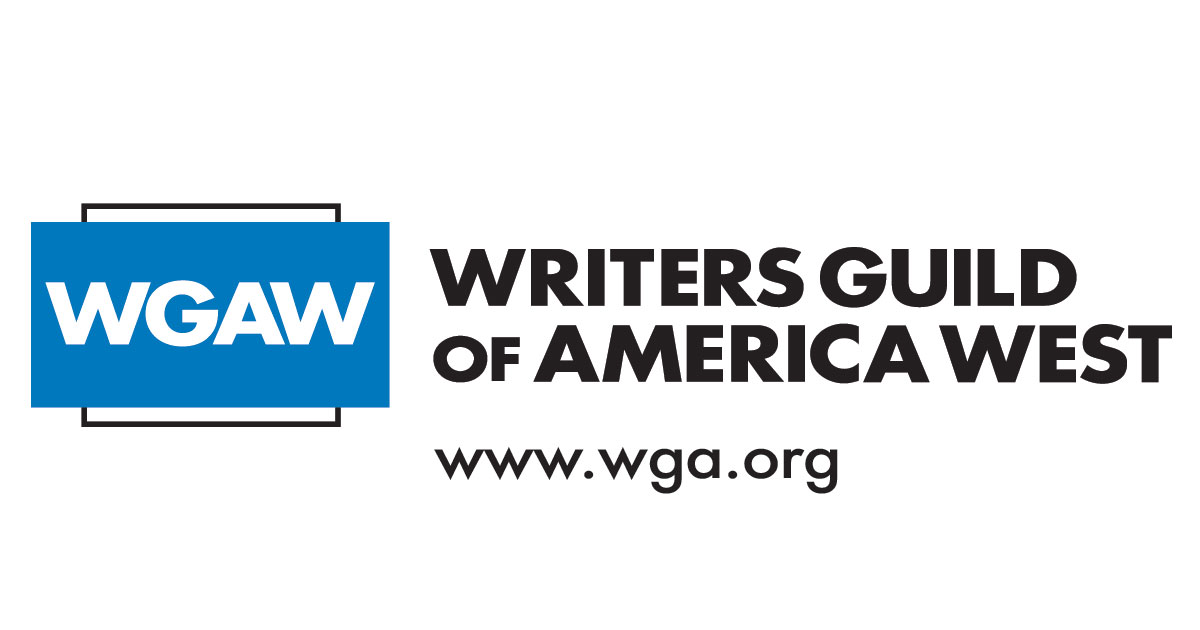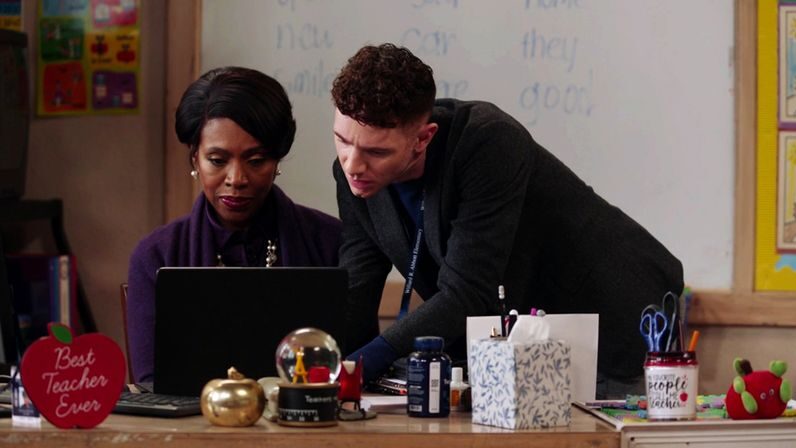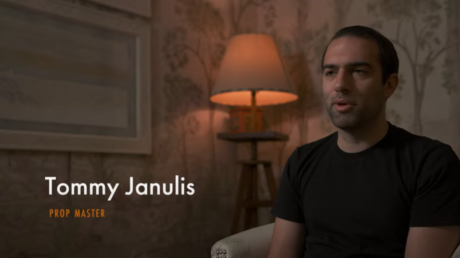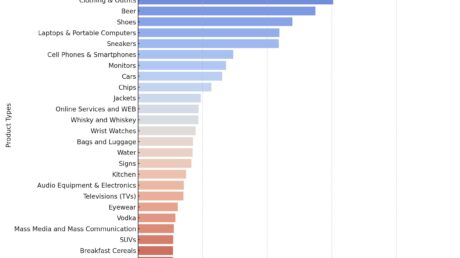WGA members are now on strike after a deal could not be reached for a new contract by May 1. Learn what they’re fighting for.
The writers’ strike has officially begun. The Writers Guild of America (WGA) and the Alliance of Motion Picture and Television Producers (AMPTP) failed to reach a deal on a new minimum bargaining agreement (MBA) by the deadline of May 1, leading for the guild to call its first strike since 2008. Writers are hitting the picket lines beginning Tuesday, and Hollywood is bracing for what could be a massive disruption to the film and TV industry.
Writers say they want a living wage as streaming devalues their work even as it demands more of their time. Studios say the guild is asking too much at the wrong time — streaming has to focus on revenue when it used to value subscriber counts.
There’s a lot more to it than that, of course. No one “wants” a strike, but it appears that both sides are far apart and could be digging their heels in for quite a while.
In recent weeks, IndieWire approached the writer’s strike from the ground level, speaking to writers from different backgrounds — including a feature film writer, a narrative TV writer for both broadcast and streaming, and a veteran late night comedy writer — each of whom faces different challenges. Here’s what’s at stake, how we got here, how long a strike could last, and what it all means.

Where are the writers and studios divided?
The guild said late Monday after negotiations concluded that the studios were trying to turn writing into a “gig economy” and threaten to turn writing into a “freelance profession.” The studios on the other hand said the biggest sticking points were the guild’s requirements for “mandatory staffing” and “duration of employment,” which the AMPTP says are “Guild proposals that would require a company to staff a show with a certain number of writers for a specified period of time, whether needed or not.”
The WGA went a step further and published its full list of proposals offered as of May 1, along with the AMPTP’s counter offer (some of which came with no counter offer at all). The first big gap concerns money. The guild says that its proposals would amount to an extra $429 million per year coming writers’ way, whereas the studios’ counter offers them only an extra $86 million per year. For what it’s worth, “The Super Mario Bros. Movie” grossed worldwide in a single weekend what the writers are asking for in raises.
But while there was some give between the two sides on recalculating residuals formulas or raises to minimum wages, as well as even some tentative agreements over span protection and other factors, guild leadership said in an interview that the AMPTP refused to even hear out their proposals on what the guild considers core, “existential” issues, and in that regard, both sides remain very far apart.
Among those are the issues of minimum staffing on shows, doing screenwriting work effectively for free, asking for the same protections for working on variety shows for streamers as those who work in broadcast (and instead offering a “day rate), and refusing to even engage on the subject of using AI-generated material. The studios also did not offer a counter proposal when the guild asked for a “viewership-based residual,” such that hit streaming shows pay out more than a show that isn’t as successful, which suggests that the studios still see its data as top secret.
What happened ahead of the May 1 deadline?
On April 17, WGA members overwhelmingly approved a strike authorization vote, which gave the guild permission from its over 11,500 television and movie writers to initiate a strike once the two sides were unable to make a deal. That strike authorization vote was approved by 97.78 percent of the members who voted, a record for the guild in terms of unity but also in terms of members who submitted ballots. It gives the guild a lot of leverage in the remaining days of talks with the AMPTP and proves they mean business.
Back during 2017’s negotiations, there was a similar vibe around town and the strike authorization vote approval was nearly as high… but the guild and the studios averted a strike at the last minute. That didn’t happen here.
In the last few months, producers began stockpiling scripts. Studios greenlit projects and raced to begin production while pitches for other new business dwindled and the market slowed. Not great signs that things are going to improve any time soon.
So what happened the last time the writers went on strike?
Back in 2007, the WGA fought for regulated payment over content moving to “new media,” i.e. streaming before anyone knew to call it streaming. At that point, Netflix was a DVD company that had just introduced streaming, but enough content lived online that writers knew they had to make a move. In the 100-day work stoppage that extended into February 2008, talk shows and other variety shows ground to a halt. TV series like 30 Rock, The Big Bang Theory, or Heroes saw their seasons cut short, while others like 24 or Entourage were delayed altogether.
It meant a whole lot of reruns, reality shows, and game shows. Some late-night hosts found ways to keep their non-writing staffs paid for a period of time; some late-night shows returned to the air without writers until the strike was resolved. A 2008 report in the Los Angeles Times estimated that the strike cost the local economy $2.1 billion and that didn’t take into account all the ripple effects on other industries nationwide or the impact it had on individual crew members.
What was the outcome of the last strike?
After the strike, streamers were obligated to hire WGA writers and writers received 1.2% of a distributor’s gross receipts for rentals. For ad-supported streaming, writers were granted 2% of gross receipts after the first 17 days. Attempts to place reality and animation writers under the WGA failed. There was no determination around subscription-based streaming because, at the time, it barely existed.
What could happen to the movies and shows I watch today?
Now that a strike has begun, it will mean writing work will immediately halt for movies, television, and streaming. Just as before, late-night talk shows will almost instantly stop producing new episodes, and variety shows like Saturday Night Live or Last Week Tonight will be forced to cut their seasons short if the strike carries on. Late night hosts are still expected to pay their non-striking staffs while dark this time around.
While many of the highest-profile broadcast or cable series are already in the can, it might not take long before viewers notice an impact and see the fall season and returns of shows delayed, as writers generally begin work on the season in May or June. The WGA recently sent a letter to media analysts and investors (read it here) indicating that during the 2007-08 strike, almost 25 percent of all primetime, scripted programming during that network season was lost, and it singled out shows like Abbott Elementary, NCIS, or Chicago Med that could be delayed.
Largely unaffected would be reality shows, game shows, news, sports, and other unscripted programming. If streamers and studios have more leverage now than they did in 2007, it’s because there are more avenues now for streamers to lean on international programming that are outside the WGA. IndieWire even reported that a recent dip in the market for documentary films and series could see a renewed surge of interest if networks and streamers are forced to turn to more unscripted documentaries for content.
With movies, the impacts could be felt not this year but next year, should projects that are in the pipeline now get delayed or are not able to start shooting on schedule because of a work stoppage. The longer a strike goes, the more pronounced those problems become.

Compared to 2007, what’s different for the studios facing a writers’ strike?
It’s possible that they may feel less pressure, initially: 16 years ago, streaming was in its infancy and viewing options were much more limited. The constant feed of on-demand content means no one faces the same kind of rerun exhaustion.
That said, there’s still the problem of no TV shows and movies, which drive subscribers and retention. All streamers are reckoning with revenue and the reality that making money with these resource-intensive platforms is more challenging than it initially appeared.
Much of the broadcast or cable content people watch the next day on streamers like Hulu, Peacock, or Paramount+ would be affected by any delays to the broadcast season, and that also could impact on a streamer’s subscriber growth and bottom line. Many streamers though, most notably Netflix, will be able to weather the storm for longer with slates planned out months in advance.
What do writers want?
Writers are demanding higher wages that can keep up with inflation, content spends, and company profits. A streaming boom lead to waves of content, but writers feel they are being asked to do more for less. Ahead of negotiations, the WGA said median weekly pay for writers-producers has declined four percent over the last decade; adjusted for inflation, the decline is 23 percent. The median number of working weeks for TV staff writers, showrunners, and screenwriters has increased, even though the number of episodes on an average season has dropped from roughly 21 episodes in the old days to eight to 12 episodes today. Writers who are paid per episode saw their average pay dwindle — sometimes to at minimum wage, if not below.
Many writers rely on residuals from their work being re-aired or distributed as a long-term source of income, but these are also evaporating. The dominance of streaming means fewer TV episodes available; for programming like reality shows or variety, late night, and talk shows produced for streaming, the residuals range from inconsistent to nonexistent. In film, residuals have all but disappeared as streamers hold on to their content; there’s no afterlife in syndication, cable, or DVDs.
Another trend WGA wants to rein in is the “mini-room” in which a group of writers come up with stories for a full season of a show before hiring a full writing staff. This format can allow a singular writer or showrunner to hatch a show’s entire arc (think of Taylor Sheridan and Yellowstone or Mike White and The White Lotus), but as one mini-room writer recently explained to IndieWire, in practice it means writers do the full amount of work for far less pay. If they develop storylines well in advance, a streamer or network may only have to pay if the show is picked up to a second season.
This is one of the biggest sticking points in negotiations, as the WGA wants to see a minimum amount of people staffed and paid during these “pre-greenlight rooms” as well as for some to even remain on staff during and after production. Many streamers though may not greenlight a show until after all the scripts are written, which led to studios refusing to make a counter proposal.
And then there’s the AI question. The technology is in its infancy, but the guild sees how studios might view AI as the screenwriting workhorse they’ve always wanted. AI-generated material often bases its results on guild-protected, copyrighted material, but that work emerges without credit or payment. The guild is fighting to make sure AI can’t be used to rewrite a script or that a robot can’t be covered by the guild’s bargaining agreement. The guild says talks with the AMPTP on this issue went nowhere, though the studios offered to host “annual meetings to discuss advancements in technology.”
This article was originally published on Indiewire by Brian Welk.



